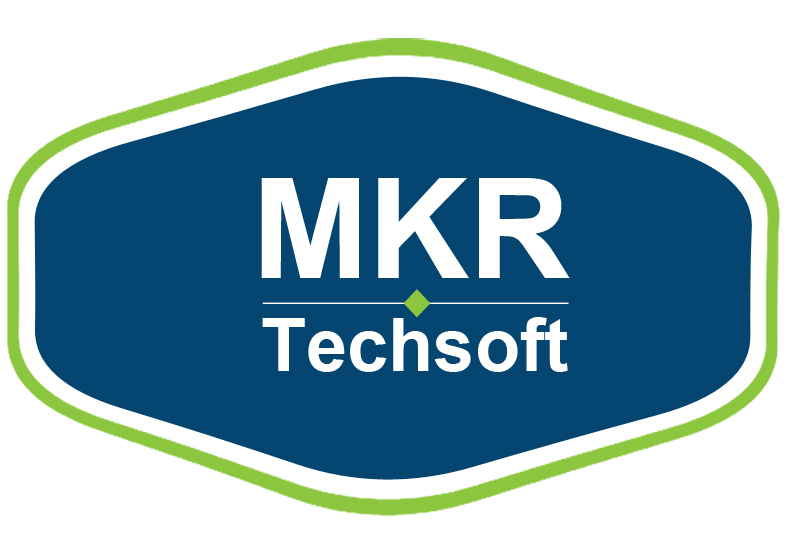In the ever-changing world of the internet, where websites compete for attention, there’s a simple truth: good content rules the roost. Think of it as the king of an online kingdom, holding the power to make or break a website’s recognition. Welcome to a place where Google, the internet’s giant librarian, regularly shuffles the order of search results through something called Google core updates. These updates can either boost your website’s status or send it into obscurity.
But fear not! In this journey, we’re going to uncover a hidden secret for not just surviving but thriving in this ever-shifting digital landscape. It’s all about creating great content.
Together, we’ll explore the mysteries of Google core updates and unravel the importance of having top-notch content that’s both high-quality and highly relevant. Imagine it as a mission to make your website shine in the eyes of Google and, more importantly, your visitors.
So, let’s dive in and uncover how crafting engaging, helpful, and well-constructed content can be the key to not just staying afloat but rising above the digital waves. Get ready to discover how your words can not only exist on the web but also thrive, making a real impact on your audience. Welcome to the world of “Content is King,” where the magic of words isn’t just celebrated—it’s the very heart and soul of digital success.
Understanding Google Core Updates
Before we dive into the importance of content quality and relevance, let’s first understand what Google core updates are and why they matter.
Google core updates are noteworthy changes to the search engine’s algorithms. These updates mean to enhance the overall feature of search results by adjusting how websites are ranked. Google’s goal is to make sure that users receive the most appropriate and valuable information when they make a search. Consequently, websites that align with these new algorithms thrive, while those that don’t may see a drop in their rankings.
The frequency of Google core updates varies, but they, in general, happen only sometimes a year. Each update brings about adjustments to how Google assesses and ranks web content, making it crucial for website owners and digital marketers to adapt to these changes swiftly.
Content Quality – The Cornerstone of Success
Now that we’ve established what Google core updates are let’s delve into the first key element for thriving in this landscape: content quality. Google places a high emphasis on delivering quality content to its users, and it rewards websites that provide valuable, informative, and well-crafted content.
1. Creating High-Quality Content
Quality content is the establishment of a successful website. Google core updates often prioritize websites that offer comprehensive, accurate, and engaging content. Quality content not only attracts website visitors but also pleases search engines like Google, especially during Core Updates. Here are the key components to consider:
In-Depth Research:
- Thorough research is the first step in creating high-quality content. It involves diving deep into your chosen topic and collecting as much appropriate info as possible.
- Seek information from reputable and trustworthy sources. Citing trustworthy sources adds reliability to your content.
- Back your claims with data and statistics. Numbers and facts provide evidence and make your content more reliable. It also helps your audience trust what you’re saying.
Engaging Writing:
- Ensure your content is reader-friendly by using plain and straightforward language. Avoid complicated terminology or intricate sentences that may puzzle your audience.
- Divide long paragraphs into shorter, easier-to-absorb sections. Lengthy text blocks can seem daunting and discourage readers from interacting with your content.
- Integrate visuals such as pictures and videos to boost user involvement. Visual elements can illustrate your ideas effectively, enhancing the appeal and memorability of your content.
Originality Matters:
- Plagiarism, which means doubling someone else’s content and publishing it as your own, is strictly discouraged. It not only damages your website’s reputation but can also have legal consequences.
- Ensure that your content is unique. Even if you’re discussing common topics, bring your unique perspective or voice to the content.
- To be absolutely certain, you can use duplicate content-checking tools available online. These tools scan your content and compare it with a huge database of existing data to recognize any potential instances of plagiarism.
Regular Updates:
- Content isn’t static; it should evolve with time. Regularly updating your content is essential for maintaining its relevance and accuracy.
- Outdated information can mislead your audience and harm your website’s credibility. Ensure that facts, figures, and references are up-to-date.
- When you make updates to your content, you’re sending a message to search engines that your website is consistently maintained and offers valuable, up-to-date information.
2. User Intent and Content Alignment
Google’s algorithms are intended to recognize user intent. To thrive in Google core updates, your content should align with what users are looking for. When we talk about “user intent” in the context of Google’s algorithms and core updates, we’re referring to the underlying reason why someone performs a particular search.
Understanding & aligning your written content with user objective is crucial for success in Google’s search rankings. Here’s a breakdown of how to achieve this:
A. Keyword Research:
Keyword research is the foundation of aligning your content with user intent. This process entails recognizing the precise terms and expressions frequently employed by individuals when seeking information within your specific field or industry. This phase is crucial as it aids in uncovering the online preferences of your target audience.
To conduct efficient keyword research, you can utilize resources such as Google Keyword Planner or other SEO tools designed for this purpose. These instruments offer valuable insights into factors like search volume, competition levels, and the pertinence of different keywords. Prioritize keywords that not only align with your niche but also exhibit a noteworthy search volume, signifying active user interest in content associated with these terms.
B. Understand User Intent:
Understanding user intent goes beyond merely identifying keywords. This process entails diving deeper into the motivations and objectives of individuals conducting these searches. Google’s objective is to deliver search results that most closely align with what users are attempting to accomplish with their search queries.
User intent can typically be categorized into a few common types:
- Informational Intent: Users are typically looking for information or solutions to their inquiries. For instance, when someone searches for “how to bake a cake,” they have the intention to gather information, which we term as informational intent.
- Navigational Intent: Users are on a quest to locate a particular website or webpage. An example of this is a search for “Facebook login,” which reflects navigational intent.
- Transactional Intent: Users have a clear intention to complete a transaction or perform a specific action, such as subscribing to a newsletter or reserving a hotel room.
- Commercial Investigation Intent: Users are in the exploration stage, gathering information before making a purchase decision. They’re interested in comparing products or services. For instance, a search for “best smartphones 2023” falls into this category as users are in the process of researching their options.
Comprehending the purpose behind a search query is vital because it directs you in crafting content that matches precisely what the user is seeking.
C. Create Targeted Content:
Once you’ve identified relevant keywords and understood user intent, the next step is to create content that directly addresses the needs and questions of your target audience. Your content should strive to provide solutions to their issues or answers to their inquiries.
For instance, if you run a website about healthy recipes and your keyword research shows that “quick and healthy breakfast recipes” is a popular search term, you can create a detailed blog post or video that provides a variety of quick and healthy breakfast recipes. This content directly aligns with the user’s intent, which is to find easy and nutritious breakfast ideas.
Content Relevance – Staying on the Cutting Edge
While quality content lays the foundation, content relevance is what keeps your website current and aligned with Google’s evolving algorithms.
Stay Informed About Industry Trends
To maintain content relevance, you must keep a pulse on your industry’s latest trends and developments. Regularly revise your content to reflect these changes. Here’s how:
- Monitor Industry News: Subscribe to industry blogs, news outlets, and newsletters to stay informed about the latest trends, technologies, and updates.
- Update Existing Content: If a significant change or breakthrough occurs in your industry, revisit your existing content to incorporate this new information.
User Engagement Metrics
Google pays attention to how users interact with your website. Metrics like bounce rate, time on page, and click-through rate can indicate the relevance and appeal of your content.
- Reduce Bounce Rate: Ensure that your content is engaging and meets the expectations set by your title and meta description. A high bounce rate can indicate that users are not discovering the content they expected or needed.
- Improve Dwell Time: Dwell time refers to how long users stay on your site. Engaging content that holds users’ attention can increase dwell time and signal to Google that your content is valuable.
- Optimize Click-Through Rate: Your title and meta description should be compelling and accurately represent your content. A high click-through rate signifies that your content meets the expectations of users, aligning with what they were looking for.
Conclusion
In the ever-evolving digital landscape, where content is truly king, success hinges on the quality and relevance of what you offer. As we’ve explored the essential elements of thriving in Google Core Updates, there’s one partner that stands out in helping you conquer this dynamic terrain: MKR Techsoft.
MKR Techsoft isn’t just another player in the game; they are the architects of digital transformation. By embracing cutting-edge technology and fostering a fervent spirit of innovation, MKR Techsoft empowers businesses similar to yours to thrive in the ever-evolving landscape of change.
Imagine having a trusted ally who understands the nuances of content quality and relevance, guiding you toward creating content that not only ranks but resonates with your audience. MKR Techsoft doesn’t just keep pace with industry trends; they set them.
So, as you embark on your journey of digital growth and adaptation, make sure MKR Techsoft is your trusted partner. Together, you’ll not only conquer Google core updates but also unlock the true potential of your online presence. It’s not just about surviving; it’s about thriving, and MKR Techsoft is your ticket to that thrilling ride.













